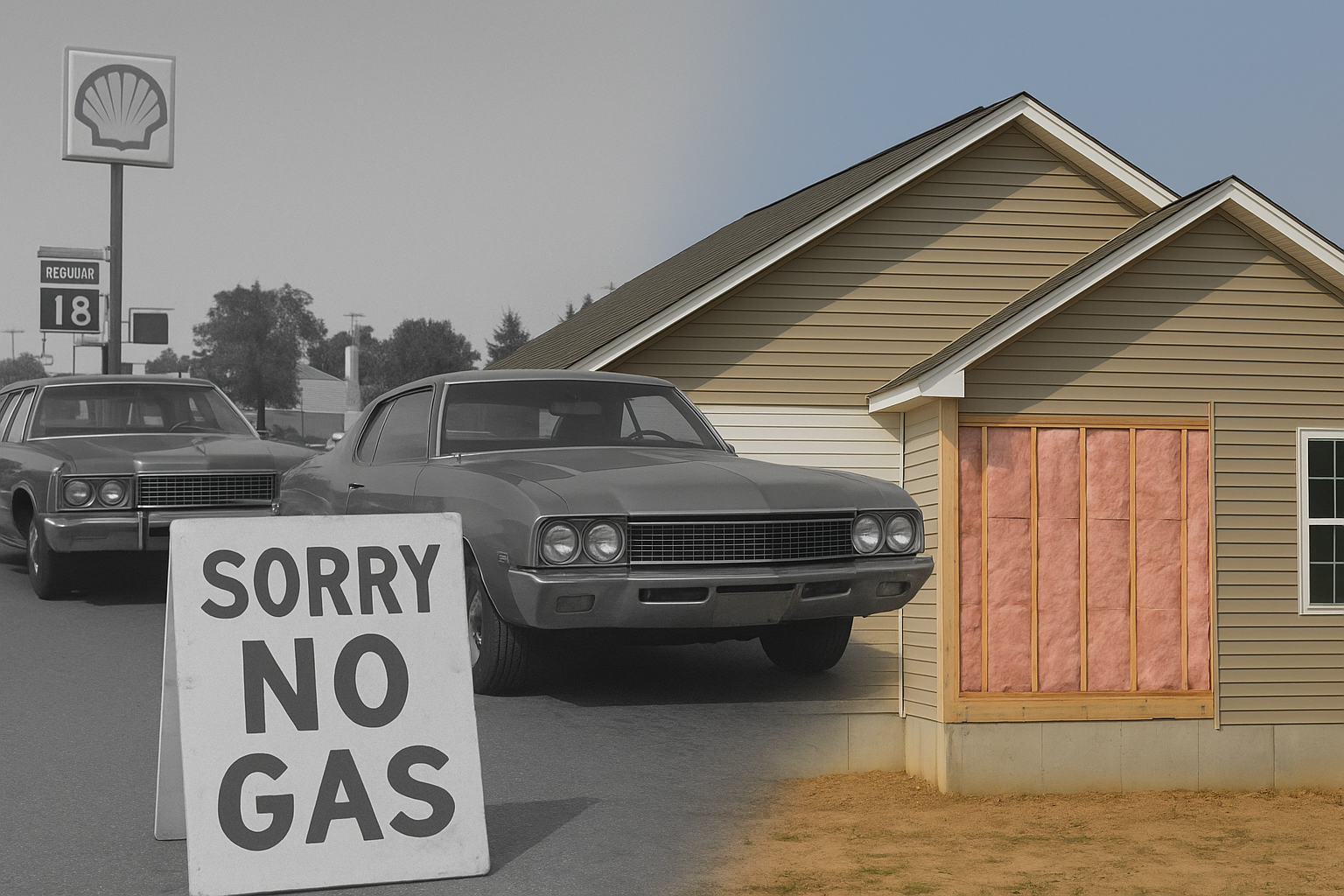Have you ever wondered why home insulation became such a big deal? It all started with the 1973 oil crisis. When oil prices shot up, it became clear just how much we were relying on energy, and suddenly, people realized that keeping their homes warm or cool was costing them more than ever.
This wasn’t just about higher gas prices—it was a wake-up call. With energy shortages on the horizon, more homeowners began looking for ways to make their homes more energy-efficient. That’s when insulation really took off. It went from being something that wasn’t really thought about to being one of the most important factors in keeping energy bills down.
Today, companies like us at Advance Insulation Canada continue to help homeowners make their homes more energy-efficient, offering expert insulation services that save money and ensure comfort throughout the year.
What Was the 1973 Oil Crisis?
In October 1973, the Organization of Arab Petroleum Exporting Countries (OAPEC) declared a total oil embargo on countries that supported Israel during the Yom Kippur War. These countries included the United States, Canada, Japan, and several European nations. The embargo was a direct response to the war, in which Egypt and Syria sought to recover territories lost to Israel during the Six-Day War in 1967.
The results of the oil crisis of 1973 were swift and dramatic. Oil prices surged from $3 per barrel to nearly $12 per barrel by March 1974, a jump of nearly 300%. The United States and Canada, reliant on Middle Eastern oil, found themselves suddenly vulnerable. At the same time, oil supplies were significantly disrupted, causing widespread shortages and rationing.
The oil crisis had far-reaching economic and political effects, causing a “shock” that reverberated through global markets, particularly in oil-dependent countries like Canada. For Canadians, the shock wasn’t just at the gas pump—it was felt in the cost of home heating, industrial production, and transportation.
The 1973 oil crisis marked the beginning of an era of energy awareness. People suddenly started asking: How can we use less oil, and how can we save on heating costs during cold winters?
How Did the 1973 Oil Crisis Affect Canada?
The oil crisis of 1973 hit Canada hard. Canada, while a major oil producer, still depended heavily on imports from the Middle East. In fact, about 20% of Canada’s oil was imported, and much of it came from the Middle East and North Africa, areas that were now at the center of the crisis.
A sudden rapid price increase for oil and severe shortages. Canadian households that had grown accustomed to cheap oil were now facing steep heating bills. In the midst of this, energy efficiency quickly became a key priority.
Here’s how it affected Canada:
- Oil Prices Soared: The price increase didn’t just hit the gas station. Home heating oil prices climbed as well, putting a strain on Canadian families, especially in colder regions like Ontario and Quebec.
- Economic Impact: With rising energy costs, Canadians experienced inflation and higher living costs, causing many to seek ways to reduce energy consumption at home.
- Energy Shortages: The reduction in available oil meant less fuel for home heating and transportation, forcing Canadians to rethink their energy habits.
The immediate aftermath of the crisis made it clear that Canada could not continue relying on cheap, imported oil. The government responded by instituting energy-saving measures, but the demand for practical, cost-saving solutions—like insulation—soared.
How the 1973 Oil Crisis Sparked the Insulation Boom
The oil crisis in 1973 led to one of the most significant shifts in home construction and renovation in Canada’s history: the insulation boom.
Before the crisis, energy efficiency was not a priority in homebuilding. Insulation was often an afterthought. Homes were built with minimal consideration for energy conservation. But the sharp rise in energy prices made it clear that reducing heat loss was no longer optional—it was essential.
- Energy Awareness:
With energy costs rising sharply, Canadian homeowners and builders began looking for ways to reduce their energy consumption. Insulation, once a minor consideration in construction, became a vital part of new building standards. People started retrofitting their homes with new insulation materials to keep heat in and reduce heating bills.
- Government Programs and Incentives:
The Canadian government, recognizing the importance of energy conservation, launched initiatives to encourage home insulation. Programs and rebates were put in place to help homeowners retrofit their homes with better insulation. These measures included tax credits for insulation upgrades and low-interest loans to improve energy efficiency.
- Technological Advances in Insulation:
The demand for better, more efficient insulation led to innovation in materials. Companies began developing fiberglass insulation, foam boards, and blown-in cellulose to meet the growing demand. These materials were far more efficient at trapping heat than the older, less effective insulation types.
- Building Codes Evolve:
The oil crisis of 1973 also had a lasting impact on building codes. The Canadian government and provinces began to set higher standards for insulation in new construction, ensuring homes were built to keep energy consumption as low as possible. These updated building codes led to more efficient homes and a greater focus on sustainability.
Why the Lessons of 1973 Still Matter Today
We’re in a new era of energy awareness. Climate change, volatile oil markets, and the push toward carbon neutrality are once again putting energy efficiency in the spotlight.
While we’re no longer at the mercy of a 1970s-style oil embargo, we are facing:
- Rising home heating costs
- Pressure to reduce greenhouse gas emissions
- Increased demand for sustainable buildings
And just like in 1973, insulation remains one of the simplest and most cost-effective ways to cut energy use.
Whether you’re a homeowner in Calgary or a contractor in Halifax, investing in better insulation is still a smart move. It saves money, adds comfort, and reduces reliance on fossil fuels—exactly what Canadians needed then, and exactly what we still need today.
How Insulation Technology Has Evolved Since the 1970s
Insulation isn’t what it used to be. While fibreglass is still widely used, new materials and technologies have taken center stage.
Innovations include:
- Spray foam insulation: Provides both thermal protection and air sealing in one step.
- Reflective barriers and radiant insulation: Especially useful in attics to reflect heat.
- Vacuum-insulated panels (VIPs): Ultra-thin but extremely effective, ideal for tight spaces.
- Eco-friendly options: Hemp, recycled denim, and cellulose made from recycled paper.
Today’s builders also take a “whole home” approach. It’s not just about insulation—it’s about sealing air leaks, managing moisture, and balancing indoor air quality. For Canadian homeowners and commercial builders alike, these improvements make homes warmer in winter, cooler in summer, and far more affordable to operate year-round.

